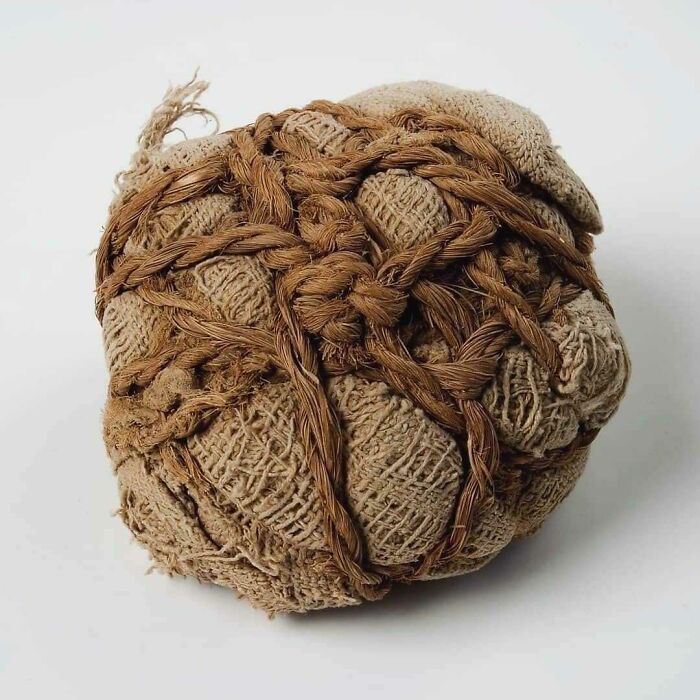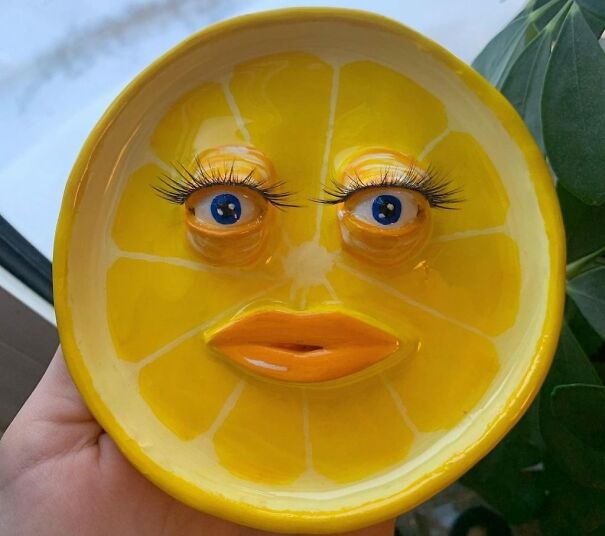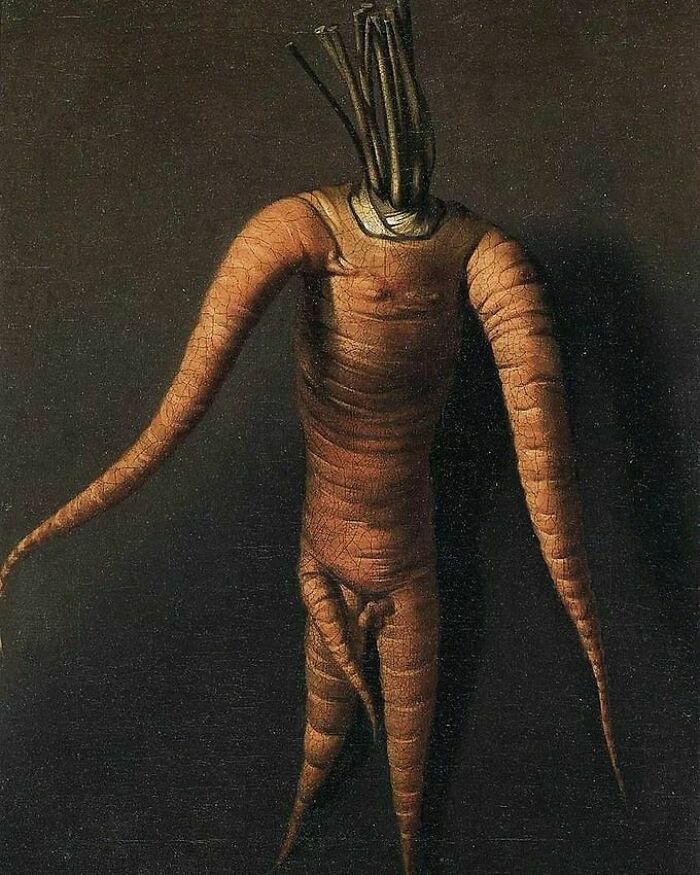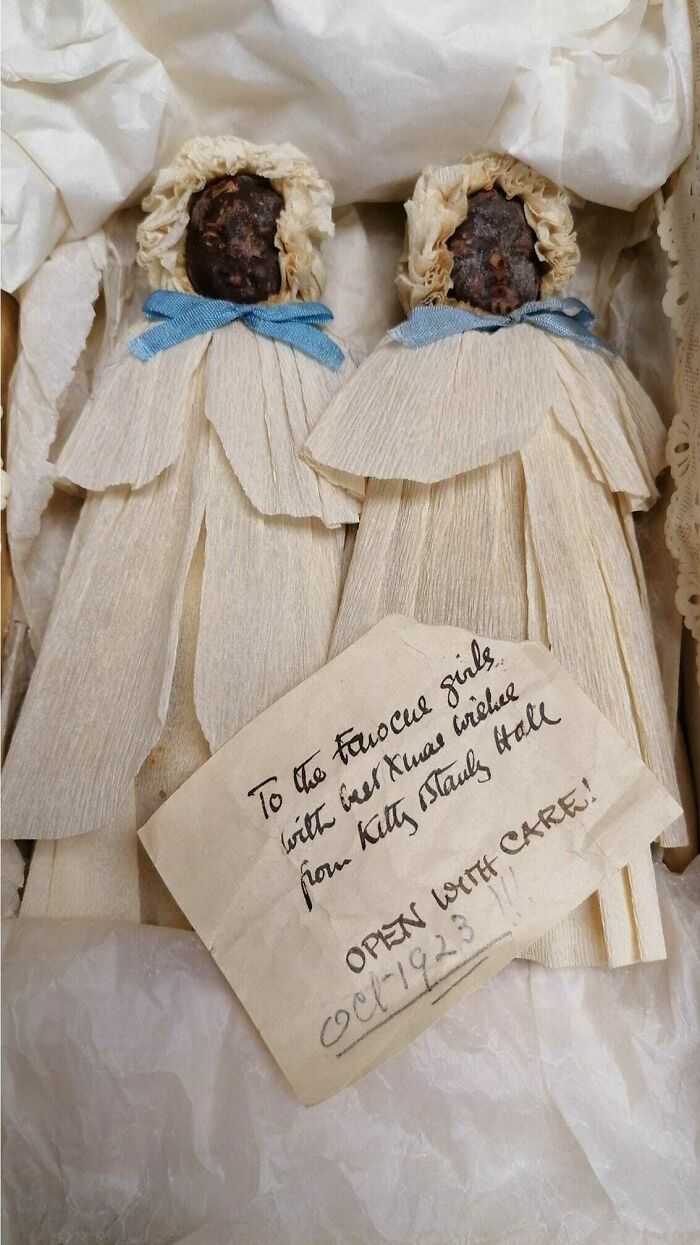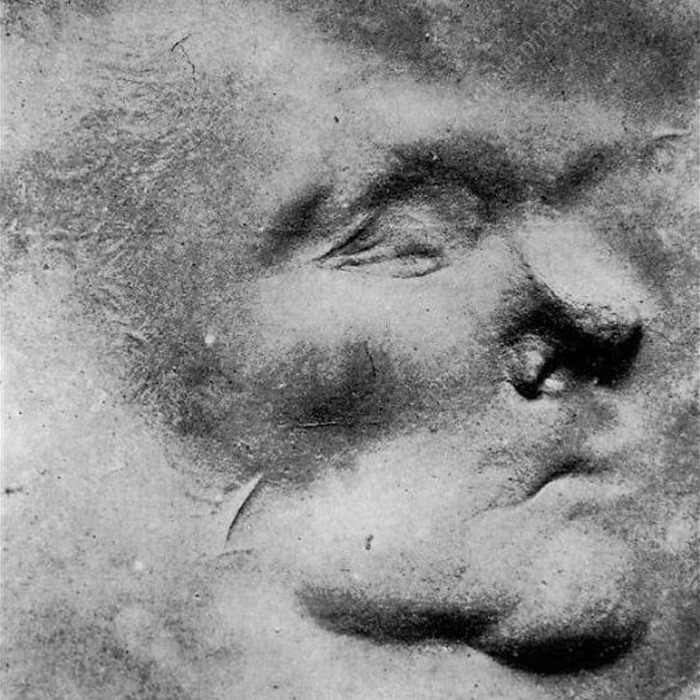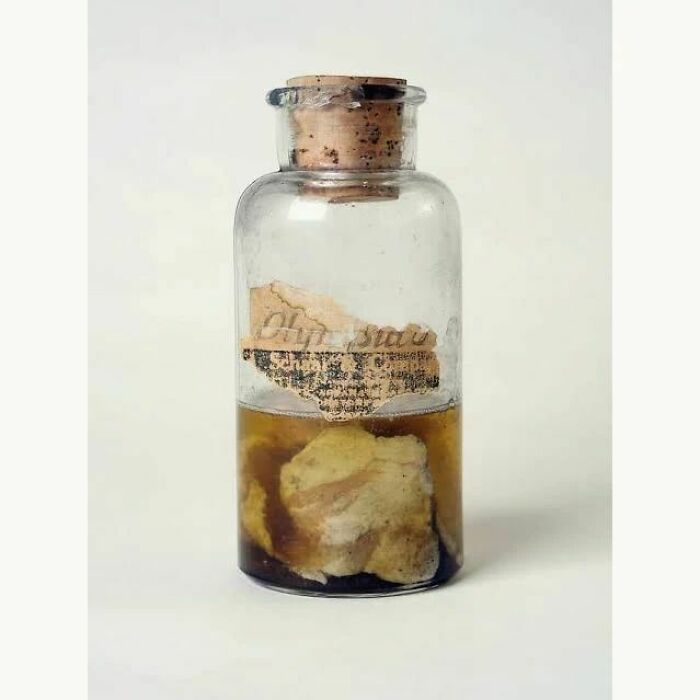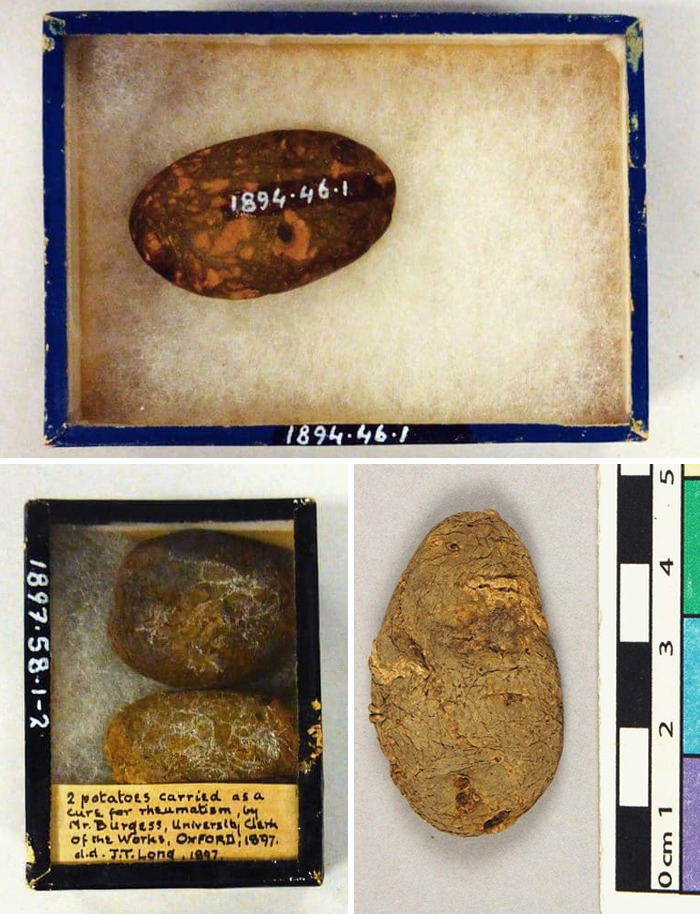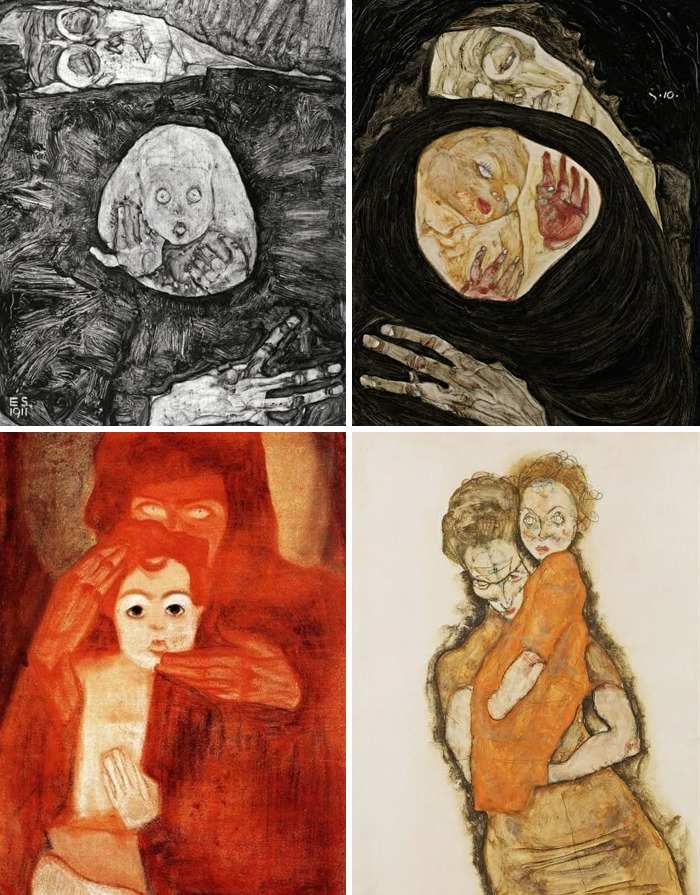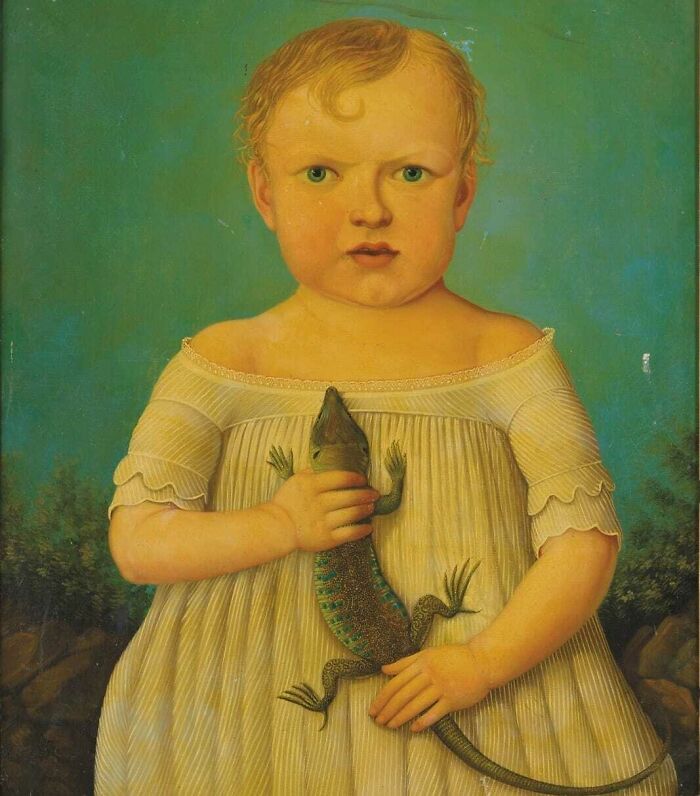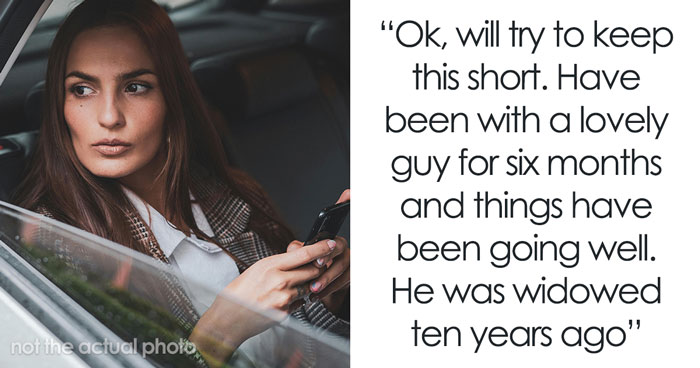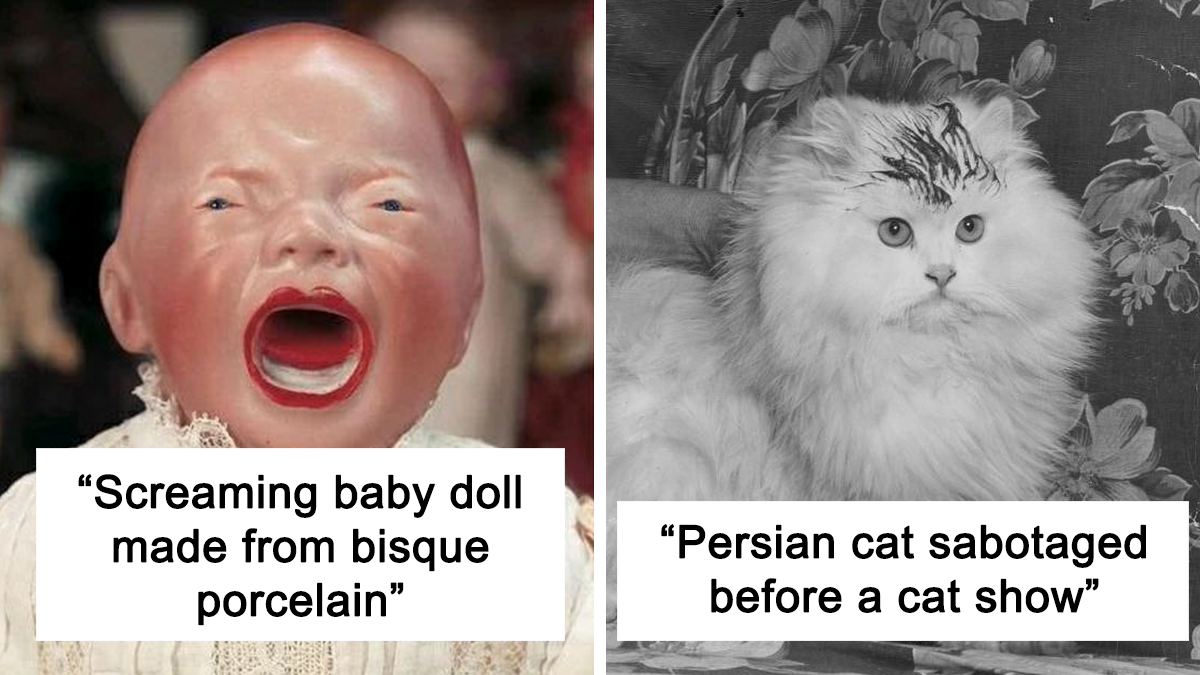
“The Museum of Ridiculously Interesting Things”: 30 Of The Weirdest Items Shared On This Facebook Page
Some people have a taste for the mundane, others are fascinated with the peculiar. If you’re one of the latter ones like me, pull your seat closer. Welcome to the “The Museum of Ridiculously Interesting Things,” which is an imaginary online museum that stretches between a website, Instagram and Twitter accounts, and a Facebook page with an audience of 53k strong.
Written by curator and historian Chelsea Nichols, The Museum of Ridiculously Interesting Things started out in 2011 as her personal blog. It was relaunched three years ago as an umbrella site for a series of digital, curatorial and writing projects dedicated to making the world a weirder and more interesting place. Today, it’s a treasure box that explores the strange place between art and curiosities.
Below we selected some of the most intriguing examples shared, or rather exhibited, at The Museum for your amusement!
This post may include affiliate links.
Ok, Are You Ready To Cry? About 4500 Years Ago, Ancient Egyptian Parents Put This Homemade Ball In Their Child's Grave As A Toy For The Kid To Play With In The Afterlife
It is made from old linen rags tied up with string, and was probably not made specifically for the burial -- rather, the ball was more likely something that the child loved and played with during their short life.
This kicks me right in the damn guts. It's from the collection of the Bristol Museum and Art Gallery, where I assume the label does not say "Ancient toy stolen from a well-loved dead kid" but maybe it should.
Dummy Head Used By Scientific Educators Around The Turn-Of-The-Century To Demonstrate Static Electricity
The demonstrator would rub the metal pole at the bottom with his hands, generating a charge that would travel up through the dummy head and make its hair stand on end.
Here are the answers to the questions I know you'll all be asking about this:
- Yes, that is real human hair.
- No, I do not know whose hair it is.
- No, to the best of my knowledge the dummy did not ever come to life and seek revenge on the scientists who had given him so many bad hair days.
- Yes, you probably do recognize his face from that recurring nightmare that you have about getting murdered behind a gas station.
- No, I do not know why they did not paint eyelids on him, and yes of course his unblinking stare pierces my soul and fills me with a sense of cold existential dread.
- No, I do not know where you can buy one, you utter lunatic.
Persian Cat Sabotaged Before A Cat Show In Milwaukee, Wisconsin In 1949
According to her owner, Petite Lilly Bear was smeared with makeup by an unknown assailant in the hours before a Sunday morning cat show, ruining her chances of winning. She was moved to tears by the incident. (The owner was, not the cat. The cat was a model of stoic dignity in the face of such terrible adversity.)
Photograph by Powell Krueger, from Hennepin County Library Digital Collections.
Notice how normal this cat looks in terms of facial features compared to the monstrosities that are being bred these days. Club standards and judges are responsible for creating the unhealthy disfigured specimens that are deemed the "gold standard" of the breed. I hate these people for inflicting this terrible fate on these poor animals because it pleases some arbitrary human standard of what is and isn't acceptable in a breed.
Lisa Yaszek, a Regents Professor of Science Fiction Studies at Georgia Tech where she researches and teaches science fiction as a global language crossing centuries, continents, and cultures, told Bored Panda: “Objects outside the realm of everyday experience prompt us to start asking questions: Who made this object? When and how did they make it? Why did anyone make something like this? What was (or is!) its purpose? More often than not, an object initially seems strange to us because it’s from a social, political, artistic, or scientific tradition other than the ones to which we are accustomed,” she explained.
A Neon Salesman's Sample Case, Circa 1935
Shoe Doll That Belonged To A Child In The Slums Of London In The Early 20th Century
It is handmade from fabric scraps and the heel of a man's dilapidated shoe, with hair made from an old black sock.
This doll belonged to an unnamed little girl living in Bethnal Green around 1905. It was acquired by the English folklorist Edward Lovell, who would buy poor children new toys in exchange for their makeshift ones. Although Lovett is perhaps best known today for his collections of folk charms and amulets, he also amassed a huge collection of homemade dolls and games in an attempt to preserve the material culture and history of London's poorest and most vulnerable people.
However noble those intentions, I find the collection of this shoe doll unbearably sad. Rather than exchange it for a new toy, Lovett gave the child and her family a sum of money in exchange for this doll. She selflessly gave up her ONE crude toy to help out her desperately impoverished family.
From The Museum of Childhood, Edinburgh.
Frans Snyders (1579-1657), 'Studies Of A Cat's Head', Oil On Canvas. Hermitage Museum, St. Petersburg
A little known fact about this painting is that this cat's mama just killed man. Put a gun against his head, pulled the trigger now he's dead
According to the professor, we enjoy solving the puzzle presented by the strange object. “And once we’ve done so, we can indulge in yet another favorite human pastime—telling stories that connect us to these other people,” she said.
“We grieve with ancient parents who buried their children with toys; we empathize with patients searching through medical charts to understand their illnesses; we giggle at—but are also maybe a little bit impressed with—pornographers who ingeniously hide their products in plain sight.”
Lisa concluded that “the objects themselves are made from different materials and with different processes than the ones we use now in our own historical moment, but the motivation for creating and using these objects connects us all, as humans, across time and space.”
Hans Eijkelboom, 'With My Family' (1973)
For this series, the Dutch photographer would ring the doorbells of strangers' houses after he saw the husbands leave for work. He would then convince their wives to pose in a family portrait with him in the place of the father.
Another title for this series might as well be "Portrait of women who definitely don't listen to a lot of true crime podcasts."
When The Lid Is Opened On This Victorian Gold Charm, A Little Demon With Sparkling Rhinestone Eyes Pops Out
These (frankly adorable) devil totems were worn as symbols of temperance -- a reminder to resist the sinful temptation of drinking alcohol. Probably made in the US, circa 1880.
Boots Worn By Children Who Were Struck By Lightning At St Eata's Church In The Village Of Atcham In Shropshire, England On 13 July 1879
The children were apparently not seriously injured
The creator behind The Museum of Ridiculously Interesting Things is curator and art historian Dr. Chelsea Nichols, who specializes in the strange and dark corners of art history, where monstrous things lurk. According to her official website, Chelsea has a Ph.D from the University of Oxford (2014), where her doctoral thesis examined so-called human curiosities in contemporary art. Moreover, recently she was the Curator of Modern Art at Te Papa in Wellington, New Zealand from 2013-2019. Here she worked with some of her favorite projects like an interactive art exhibition called Curious Creatures and Marvellous Monsters and gallery tours with a paranormal investigator.
Terrifying Example Of A Traditional Irish Jack-O'-Lantern Carved From A Turnip, Circa 1850
Preserved all these years by the tears of children, I presume.
From the collection of the Museum of Country Life, Ireland.
Screaming Baby Dolls Made From Bisque Porcelain By German Dollmaker Kestner Around 1920
Dr. Wansbrough's Celebrated Nipple Shields, Late 19th C
For Protecting Sore Nipples From Teething Babies, And Also For Protecting Paranoid Breasts From The Telepathic Electromagnetic Waves Of Extraterrestrials
TIL that my nipples might also serve as antenna for Telepathic Electromagnetic Waves Of Extraterrestrials ...time to makes new friends
Chelsea’s “mission in life is to get more people into art, through a very weird-shaped door probably hidden somewhere in a haunted house.” And it seems like she’s definitely successful at it. In fact, Chelsea has gained quite a following on social media with more than 53k followers on her Facebook page and almost 40k on her Instagram.
For anyone who is interested in the odd and peculiar side of our world, The Museum Of Ridiculously Interesting Things is basically a playground. It features the stories behind weird artifacts, unusual objects, and historical events the chances are you've never heard of before. The hidden mothers in Victorian portraits are one such example. Turns out that photographs in the 19th century contained hidden mothers that would keep their children still enough for a non-blurry picture. The mothers would be disguised as chairs or camouflaged under decorative throws behind them, so they were not that obvious from the first glimpse.
A Tiny Devil Vitrified In A Prism Of Glass
In the 18th century, the Imperial Treasury of Vienna attested that this was a real demon which had been trapped in glass during an exorcism in Germany a century earlier.
I personally recommend selling all your cryptocurrency and investing in demon crystal instead.
From the Kunsthistorisches Museum Collection, Vienna
The 'St Dennistoun Mortuary', A Macabre Coin-Operated Automaton Made Around 1900
When a coin is inserted, the doors open to reveal morticians working on several dead bodies laid out on embalming tables. A nodding policeman observes the corpses in the middle, which are labelled "Believed murdered" and "Found stabbed." Outside the mortuary doors, two mourners dab their eyes with grief.
The mortuary was made by John Dennison, who ran a business creating ghoulish penny slot machines and creepy mechanical fortune tellers (dream job?) to amuse Blackpool tourists at the end of the 19th century. His other machines included grisly scenes like executions, haunted houses, high-profile crimes, a dying child and drunkard in a graveyard.
A Witch Whistle Or 'Heksenfluit' Made From A Rat's Paw And Carved Bone
Made in 19th century Belgium, and purchased by the Museum aan de Stroom in Antwerp in 1964.
I've seen this described on the internet as a flute used to summon witches on the Sabbath. However, according to the museum, this magical flute was actually used to dispel diseased rodents during a rat plague. (Which is possibly even weirder?)
During the mid-19th century, the third wave of bubonic plague swept the world, transmitted by fleas on infected rats. It hit China and India particularly hard and spread to port cities on trading routes with them. Antwerp, however, wasn't too badly bedeviled by the plague. Thanks, rat flute! Definitely all you
Rosamond Purcell's Unsettling Photographs Of Monkey Specimens With Cotton Ball Eyes, From The Collection Of Harvard's Museum Of Comparative Zoology
They look exactly like the things that stand outside your bedroom window at night watching you sleep.
Sweet dreams.
"They look exactly like the things that stand outside your bedroom window at night watching you sleep. " Yeah thanks, I'mma skip sleep forever now
Here's Something You Didn't Know You Needed In Your Life: Teeny Tiny Pig Porn
Made in the early 20th century, these little gold-painted pig charms hide a tiny erotic photo viewed by peering into the pig's butthole.
These charms contain a hidden Stanhope lens -- a one-piece microscope used for viewing tiny microphotographs as small as the head of a pin. From the late 1850s, it became trendy to embed Stanhopes in everyday items like pocket watches or thimbles, often sold as holiday souvenirs with pictures of popular tourist scenes.
But humans be humans and it didn't take long for someone to figure out this was also a great way of hiding porn. I'm not entirely sure why golden pig charms became a particular thing, except that pigs are particularly associated with male lust. (Hence why chauvinist men are called 'pigs'. See also: the weirdly seductive Miss Piggy.)
The first pig charm that I've pictured is actually for sale at St Eloi Vintage. However, be warned that it is coated in lead paint, so if you don't want to risk lead poisoning you may be better off getting your porn from the old-fashioned internet rather than the butthole of a tiny gold pig
Terracotta Vase In The Shape Of A Lobster Claw, Made In Greece Around 450 To 400 Bc
Only nine of these strange ancient drinking vessels are known to exist.
According to the Metropolitan Museum of Art, these lobster claws were most likely novelty cups used at symposia (drinking parties) in Ancient Greece.
Unfortunately, the museum is not interested in expanding their novelty cup collection by acquiring the gently used Looney Tunes mugs I got at KFC in the early 1990s, even though they are also excellent for serving expensive wine.
An Antique Bear Automaton Whose Fur Was Destroyed By An Infestation Of Moths
The creepy naked bear pours itself a big drink with shaky paws, tossing the whole thing back in a single gulp. The magical drink never runs out thanks to a hidden tube mechanism that runs through its arms
"Dental Plumper" Jaw Prosthetic Worn By Marlon Brando In The Godfather (1972)
Brando wanted Vito Corleone to have jowls like a bulldog, so he stuffed cotton balls in his mouth during his audition.
This dental plumper was designed by legendary makeup artist Dick Smith, and made by a New York dentist named Henry Dwork. Their first prototype used more comfortable foam latex, but it made Brando's face look too soft and droopy, so he had them remake it in steel and resin.
This jaw prosthetic must have made Brando extremely drooly, much like the bulldogs he sought to resemble.
From the American Museum of Moving Image in Queens, New York
Hard Plastic Dolls From The 1940s And 50s, Who Are All Suffering From Sad Doll Disease. This Is A Real Thing And It Is Actually Infectious
Sad Doll Disease happens to dolls made from early hard plastics, due to a chemical reaction between the cellulose acetate and the iron pins that hold their eyes in. Infected dolls start to ooze brown viscous tears, their heads warp and crack, and they begin to emit a horrible vinegar stink. Basically, this condition turns old dolls into living nightmares.
The weirdest part is that Sad Doll Disease triggers the same chemical chain reaction in other hard plastic dolls. The infectious dolls therefore have to be quarantined away from other dolls, or they too will catch it and begin to degrade. There is no cure
Amazing Vintage Krampus Gloves
These frightening homemade claws come from a small town in Austria, where they were used at an annual Krampus Festival for over 70 years. They are made from goat hair, antlers, and the bitter regrets of naughty children.
A German children's rhyme has been handwritten on the palms of the gloves, with a translation provided by the original seller @tiffasaurus.rex :
/// Hey kids – if you cheat your father, mother, and friends;
If you make noise in the school like you are in a flea market;
If you are really noisy like that, then I know I must come to scare you!
BUT if you are good children and don’t make any of the above and don’t lie,
We will enjoy this party together and flourish! ///
This children's rhyme has the power to scare the bejesus out of this 20 yo!
Late Victorian Art Pottery Known As Martinware, Which Depicts A Horrifying Crab With A Grotesque Human Face
Made by Robert Wallace Martin in June 1880, from salt-glazed stoneware.
In London in the late 19th century, Martin and his three eccentric brothers made and sold strange, Gothic-inspired pottery sculptures -- now highly sought-after by collectors around the world. This creepy smiling crab is considered the pinnacle of their unique style...so much so that the UK actually banned it from being exported from the country for sale last year because it was deemed to be of such high national significance.
Although I LOVE the grotesque I still found this ruling quite surprising, considering that (according to professional art historical opinion) this thing resembles:
- a leftover troll costume from the 1991 movie Ernest Scared Stupid
- a bag of sick with a face
- a Jim Henson puppet that was horribly disfigured in a grease fire
- what happens if you anger a sea witch
- Jabba the Hutt trying on dentures
- me when I open my camera phone by mistake
- the stuff that grows at the bottom of unwashed lunch containers when you forget to take it out of your backpack for a few weeks
After it was banned from leaving the UK, this crab was purchased by The Box, a new museum and gallery opening in Plymouth, where this nightmare in the shape of a crustacean will surely traumatize delighted visitors for years to come.
A 15th Century Painting Of St Bartholomew Wearing His Own Flayed Skin As A Robe After Being Skinned Alive And Honestly He Is Totally Pulling Off The Look
Matteo di Giovanni, 'St Bartholomew' (c. 1480-85), tempera and gold on wood. Museum of Fine Arts, Budapest
A Bin Of Doll Heads Waiting To Have Their Eyelashes Trimmed
Photographed by NZ photographer Brian Brake at a Hong Kong doll factory in the 1970s. Collection of Te Papa
Their weirdly long eyelashes tickle the part of my brain that makes nightmares
Willem Frederik Van Royen, 'The Carrot' (1699), Oil On Canvas. Märkisches Museum, Berlin
The Dutch Golden Age gave us masterpieces like Vermeer's 'Girl With A Pearl Earring' (c. 1665) and this painting of a deformed carrot man...which I think we can all agree achieves more or less the same level of breathtaking beauty.
If You Need A Gift For A Child You Hate, Look No Further. These Creepy Chocolate Babies Were Made As Christmas Presents In 1923
Recently discovered in a chest of drawers by British auctioneer Charles Hanson. They survived nearly a century because obviously, they were too scary even for rats to eat.
An accompanying note reads:
"To the Frocue[?] girls
With best Xmas wishes
From Kitty Stanly Hall.
OPEN WITH CARE - Oct 1923"
The note does not explain why Kitty was giving out Christmas presents in October, nor does it suggest which part of the baby's face you were supposed to eat first.
No more internet for me today. It's not even 12 o'clock and I already have enough nightmare material for a week.
Mechanized Gorilla Teeth And Head Gear Worn By Gorilla Impersonator Ray 'Crash' Corrigan In White Pongo (P.r.c. Pictures, 1945)
The metal armature and resin teeth were fastened around the actor's face, to sit underneath his rubber gorilla suit. Wires and levers attached to his jaw and cheeks would make the gorilla nostrils snort, the mouth open and the lips snarl.
The Impression Of A Supernatural Face In A Tray Of Putty, Made By Italian Psychic Eusapia Palladino (1854-1918)
She claimed to have produced the faces using telekinesis during a seance in 1897, while her hands were bound behind her back.
Skeptics noted that the facial imprints looked exactly like Palladino and her male assistant, rather than the ghosts that she was supposedly channeling.
Is it sleeping? Is it saying 'no'? Is it showing the cheek for a kiss? We'll never know
Hendrick De Keyser (1565-1621) Was A Dutch Sculptor And Architect Inspired By The Timeless And Majestic Beauty Of A Screaming Baby's Forehead Veins
Wow…. That was interesting history. If you excuse me, I’m heading to funny/ wholesome post
Used to look at Museum of etc. online, lost it, find it's back. Yay!!!
Wow…. That was interesting history. If you excuse me, I’m heading to funny/ wholesome post
Used to look at Museum of etc. online, lost it, find it's back. Yay!!!

 Dark Mode
Dark Mode 

 No fees, cancel anytime
No fees, cancel anytime 


